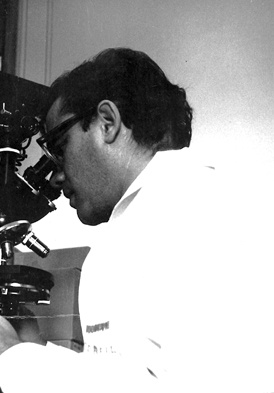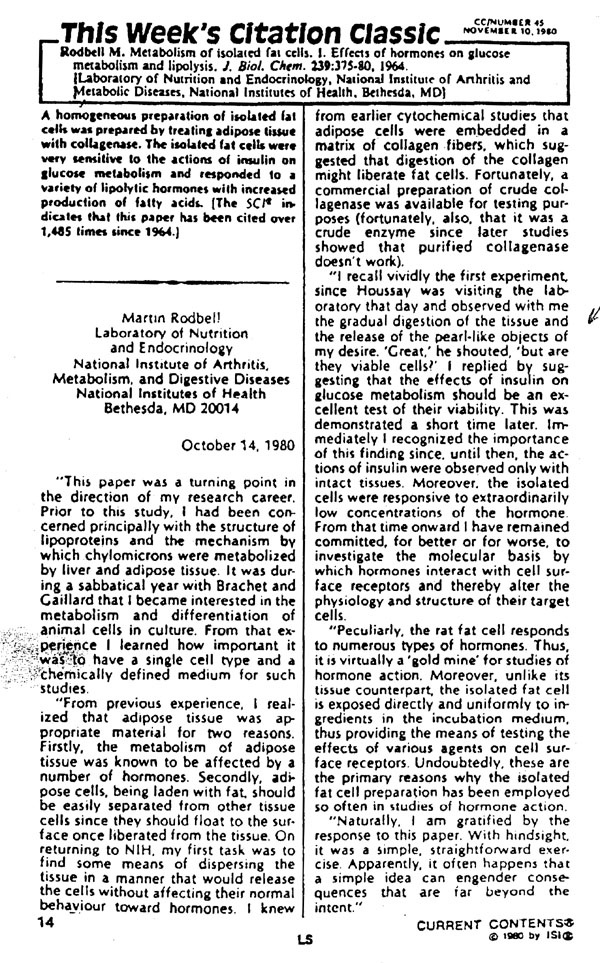The First Step: Isolating Single Cells
| Div | ||||||||||||||||||||||||||||||||||||||||
|---|---|---|---|---|---|---|---|---|---|---|---|---|---|---|---|---|---|---|---|---|---|---|---|---|---|---|---|---|---|---|---|---|---|---|---|---|---|---|---|---|
| ||||||||||||||||||||||||||||||||||||||||
|
To confirm for the Nobel laureate Bernardo Houssay, who was visiting Rodbell's laboratory, that these cells were viable, Rodbell showed that the cells reacted normally to the hormone insulin. This was a turning point in his career—Rodbell's focus shifted from studying the metabolism of fat to examining the actions of hormones.
...




